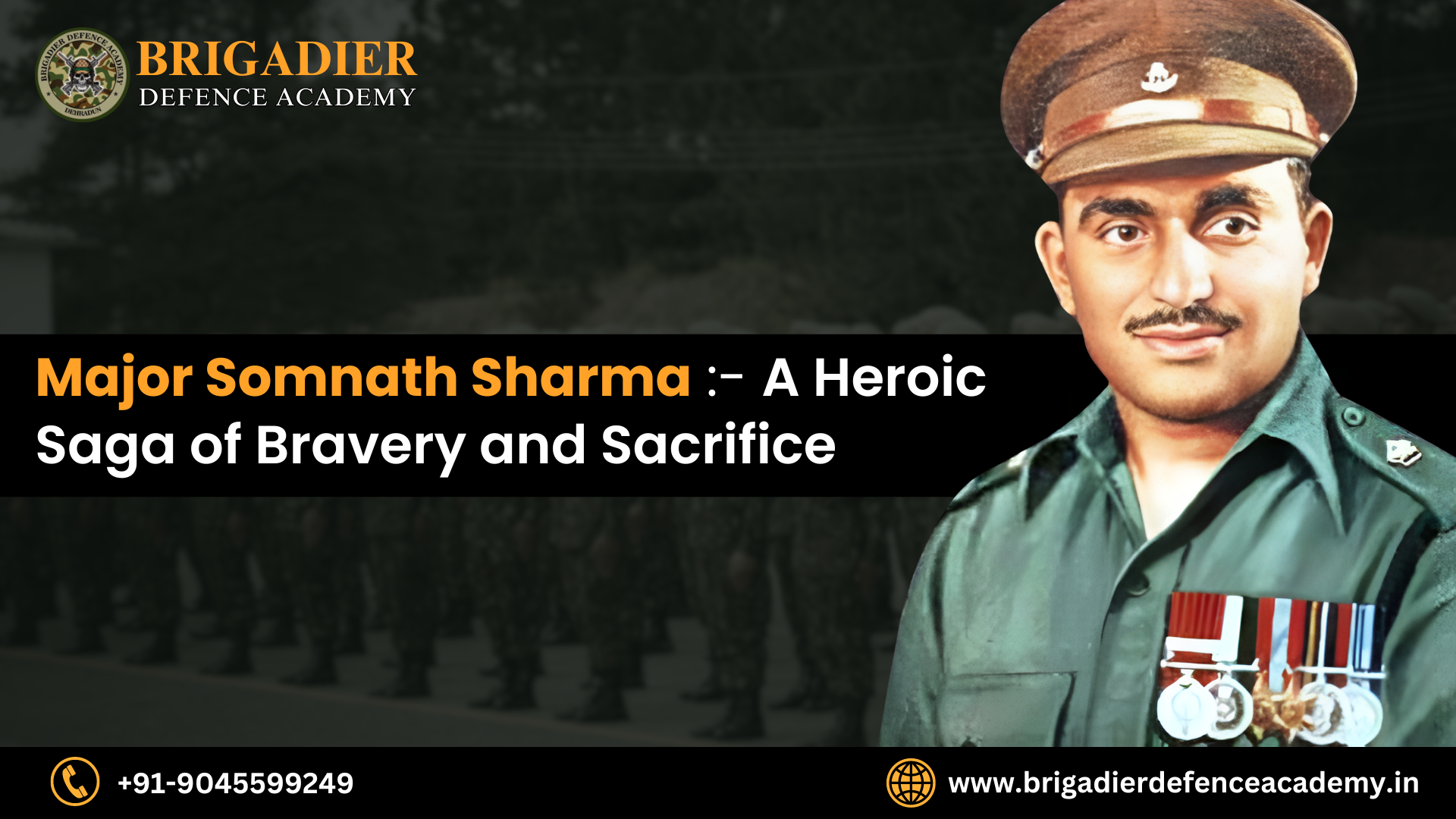Major Somnath Sharma: A Heroic Saga of Bravery and Sacrifice
Major Somnath Sharma, a name synonymous with unparalleled bravery and selfless sacrifice, remains etched in the annals of Indian military history. His indomitable spirit and heroic actions during the Indo-Pakistani War of 1947-1948 earned him the distinction of being the first recipient of the Param Vir Chakra, India’s highest military honor for valor in the face of the enemy. This article delves into the life, military career, and the gallant actions of Major Somnath Sharma, whose legacy continues to inspire generations of soldiers and civilians alike.
Early Life and Background
Born on January 31, 1923, in Dadh, a village in the Kangra district of Himachal Pradesh, Somnath Sharma hailed from a distinguished military family. His father, Major General Amar Nath Sharma, served in the Indian Army, which significantly influenced young Somnath’s aspirations. He received his early education at the prestigious Sherwood College in Nainital, where he demonstrated an early aptitude for leadership and a deep sense of duty towards the nation.
Military Career and Training
Following in his father’s footsteps, Somnath Sharma joined the Prince of Wales Royal Indian Military College (RIMC) in Dehradun, a premier institution that groomed future military leaders. His exemplary performance at RIMC paved the way for his admission to the Royal Military Academy in Sandhurst, United Kingdom, one of the world’s most esteemed military training academies. Upon completing his training, Sharma was commissioned into the 8th Battalion, 19th Hyderabad Regiment, which later became part of the Kumaon Regiment after India’s independence.
Service and Early Assignments
Major Sharma’s early military career was marked by a series of assignments that showcased his tactical acumen and leadership skills. He served in various capacities, demonstrating unwavering dedication and an exceptional understanding of military operations. His time in the British Indian Army during World War II further honed his skills, preparing him for the challenges that lay ahead in the post-independence period.
The Kashmir Conflict and Major Sharma’s Role
The pivotal moment in Major Somnath Sharma’s career came with the outbreak of the Indo-Pakistani War of 1947-1948, a conflict that arose following the partition of India and the accession of the princely state of Jammu and Kashmir to India. Pakistan, unwilling to accept the accession, launched an invasion with tribal militias and regular forces, aiming to seize control of the region.
Battle of Badgam: A Defining Moment
The Battle of Badgam, fought on November 3, 1947, stands as a testament to Major Sharma’s heroism. At this critical juncture, Sharma was tasked with securing the strategically vital area around Srinagar, the summer capital of Jammu and Kashmir. His company, part of the 4th Kumaon Regiment, was deployed to Badgam, a village near Srinagar, to thwart the advancing enemy forces.
Despite recovering from a fractured hand, Major Sharma led his company into battle with characteristic resolve. On the morning of November 3, his unit came under heavy attack from a force of approximately 700 raiders. Vastly outnumbered, Sharma and his men faced relentless enemy fire. Understanding the gravity of the situation, he urged his troops to hold their ground, exemplifying extraordinary leadership under fire.
Supreme Sacrifice
As the battle raged on, Major Sharma’s leadership and courage shone through. He moved across the battlefield, rallying his men and providing covering fire, despite the intense barrage of bullets and mortar shells. Tragically, while he was resupplying ammunition to his comrades, an enemy mortar shell exploded near him, resulting in fatal injuries.
Major Sharma’s last words, recorded by his fellow soldiers, were a poignant reflection of his undying commitment to duty: “The enemy is only 50 yards from us. We are heavily outnumbered. We are under devastating fire. I shall not withdraw an inch but will fight to our last man and our last round.”
Posthumous Recognition and Legacy
Major Somnath Sharma’s gallantry did not go unnoticed. His actions at Badgam not only stalled the enemy advance, buying crucial time for Indian reinforcements to secure Srinagar, but also inspired his fellow soldiers to hold their positions against overwhelming odds. In recognition of his valor, Major Sharma was posthumously awarded the Param Vir Chakra, becoming the first recipient of this prestigious decoration.
The citation for his award reads: “Major Somnath Sharma, for most conspicuous bravery and leadership in the face of the enemy, set an example of courage and devotion to duty that will inspire future generations of Indian soldiers.”
Impact on Indian Military Doctrine
Major Sharma’s bravery had a profound impact on Indian military doctrine and the ethos of the Indian Army. His actions underscored the importance of leadership, courage, and tactical ingenuity, principles that continue to guide the training and conduct of Indian soldiers. The story of his sacrifice is a vital part of the curriculum in military academies and is often recounted to inspire young cadets.
Commemoration and Memorials
To honor Major Somnath Sharma’s legacy, various memorials and institutions have been established. The Indian Army has dedicated military facilities in his name, and his statue stands as a symbol of bravery at several locations, including his alma mater, the Royal Military Academy Sandhurst. Additionally, his story is featured prominently in Indian military museums and history books, ensuring that his heroism is remembered and celebrated.
Major Somnath Sharma’s life and sacrifice embody the highest ideals of duty, courage, and patriotism. His unwavering commitment to his comrades and his nation, even in the face of overwhelming odds, serves as a beacon of inspiration. As the first recipient of the Param Vir Chakra, his legacy is a testament to the indomitable spirit of the Indian soldier and a reminder of the profound cost of freedom and security.
Major Sharma’s story is not just a tale of military prowess but a narrative of the human spirit’s resilience and the enduring power of selfless service. His memory continues to inspire generations, reminding us that true heroism lies in the willingness to sacrifice everything for a cause greater than oneself.







